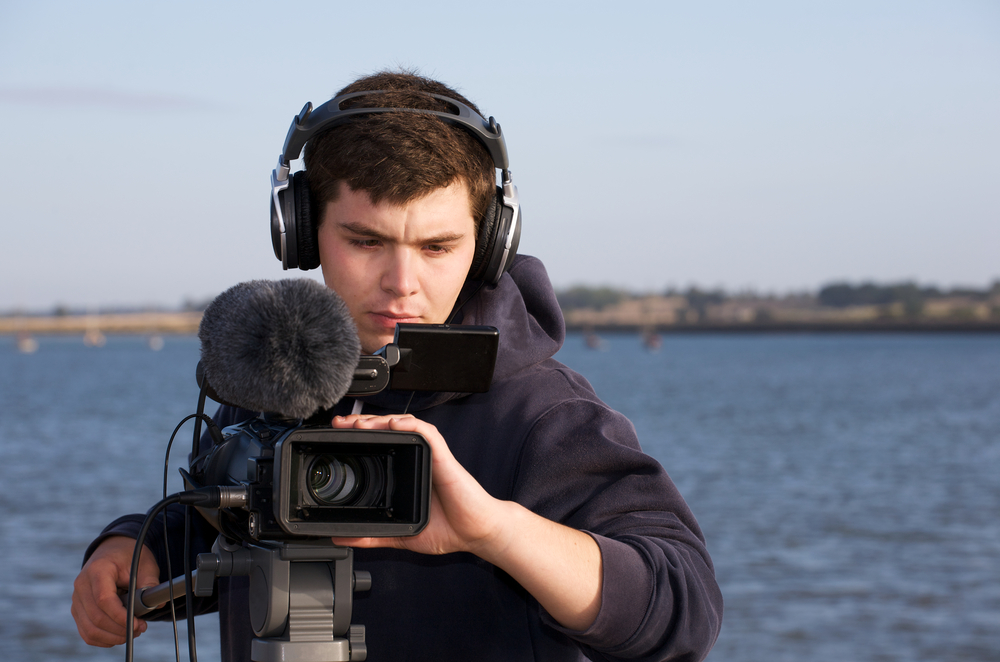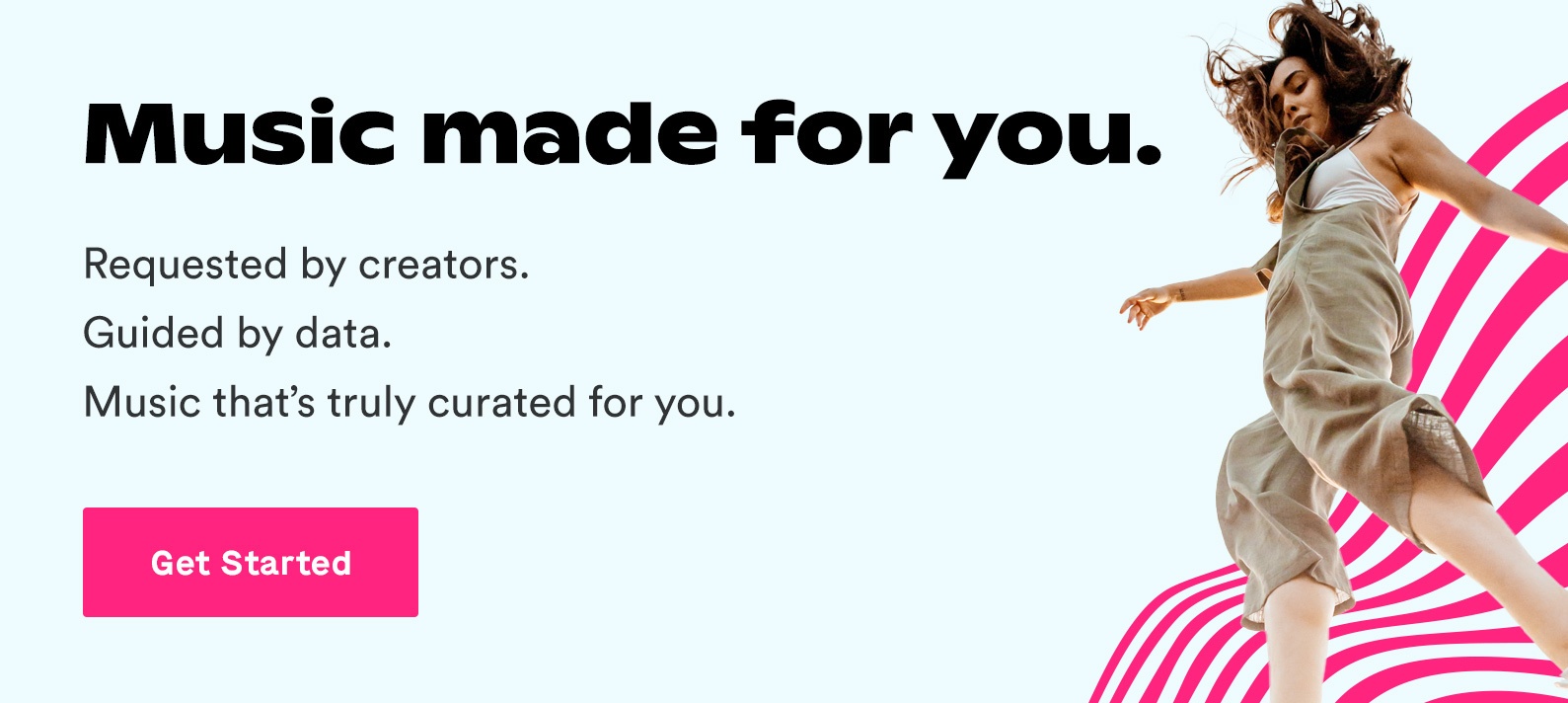
Jul 23, 2018
You’re going to be a YouTube star, baby; but in order to attract hordes of adoring fans and all the ad revenue their eyeballs will bring, it helps to avoid early mistakes.
As a YouTube newbie, you’ll certainly stumble a few times as you figure out the mechanics of developing slick videos and hone your channel’s voice, purpose and brand.
However, if you can avoid major mistakes, like not understanding how music licensing works, you can speed past the early bumps and cruise to success a lot more quickly. Reaching the point where you can monetize your videos is still a long way away.
With that in mind, here are nine common and costly music licensing mistakes that hold newbies back from YouTube success. (And tips from experienced music supervisors into how you can avoid these music licensing mistakes when looking for the right music licensing companies to help make sure your music tracks are in compliance.)
1. Not Focusing Your Video Platform
Most of us humans have varied interests. You may, for example, be super passionate about karate, giraffes, and sushi. Good for you, but the amount of people who would absolutely love to watch a YouTube channel dedicated to karate, giraffes, and sushi is probably too low to support a lucrative career in YouTube.
Your first job as you begin to plan out your YouTube channel is to figure out the focus of your channel. Developing a cohesive theme for your YouTube channel will allow you to target your audience and make it much easier to optimize your channel for the YouTube search engine.
That doesn’t mean being chained to one single topic. Instead, consider what overarching theme is going to hold everything together and help you define and target your audience.You could create an entire channel dedicated to showcasing giraffe memorabilia or review sushi rolls at restaurants around the world.
It’s okay to tweak and refine your theme as you get more comfortable with your channel, and it’s usually better to choose a broader theme so you don’t run out of video topic ideas.
2. Not Offering Value
Your mom will definitely love all your sushi review videos, but you probably won’t leave the greater world wanting more. Many new YouTube personalities assume they can just record videos that interest them and viewers will automatically fall in love, too.
After choosing the focus of your YouTube channel, your next big lift is to figure out what unique value your videos can offer. You are asking viewers to give their time to you instead of the millions of other videos they could be watching. What can you offer them?
If you’re in love with the sushi idea, consider how your reviews can add value to your viewers. Maybe start by focusing on sushi in your home city and then branch out. Switch up your video formats, by interviewing sushi chefs and restaurant owners. Look into the history of sushi and teach viewers about different sushi rolls they may have been wary of.
3. Cringeworthy AVL

You may be a one-person operation, but that doesn’t mean you have to look like it! One the fastest ways to turn off viewers is with terrible video production quality. Always, always, always focus on your AVL – audio, visual, and lighting.
Audio
You’ve probably stumbled across numerous videos with terrible audio quality. Maybe the person was recording in a super echoey room or outside, where the happy jingle of an ice cream truck in the background completely undermined their serious point. Be aware of how you sound and what environmental noises could intrude on your video.
Visual
Is your recording studio actually a small corner of the garage your spouse is allowing you to commandeer? That’s a perfectly fine space to start your YouTube career. Put up some fake walls or even hang a sheet behind you. Don’t let the audience see your rusted tool set or your boxes of junk in the background.
Also, take the composition of the shot into consideration. For example, if you are speaking, make sure that you are centered in the frame. Allow some space between your head and the top of the frame and zoom out far enough so that the entire video doesn’t feel like an uncomfortable close up.
Lighting
Check how you look on camera before recording. Natural light from a window can be a great option as long as it doesn’t wash you out or blind the audience. Likewise, indoor light may seem perfectly adequate to you but make everything look incredibly dark on camera.
At the end of the day it doesn’t matter how interesting or useful your video is if the production quality is terrible. Today’s viewers have so many options for their time that they won’t sit through low quality videos. Also, you don’t have to buy super expensive equipment to make your videos look legit. With the right preparation of your recording environment, your smartphone can produce great video. Low-cost microphones, lighting fixtures, and editing software can also help you make your videos look super professional without breaking your budget.
4. Egregiously Long Intro or No Intro at All
We all know that attention spans have shrunk over the years at the same time the number of videos on YouTube (AKA your competition) have grown exponentially. The average length of a YouTube video is just 4 minute and 20 seconds. That’s not a lot of time to work with, which is why your intro is so critical.
The most important part of your video is the intro. It’s a good rule of thumb to always assume that this will be the very first video at least some part of your audience will view on your channel. Therefore, you need to at least introduce yourself and the topic of the video in your introduction. You may also want to include your main purpose or theme and a value statement, such as what you want the audience to get out of this video.
Many new YouTubers make one of two major mistakes with their video intros. First, they don’t include an introduction at all and instead launch right into their video. Without an introduction, viewers won’t know what they’re watching or why they’re watching it. On the flip side of the coin, it’s easy to go overboard and create a tediously long intro that will drag down the pace of your video and bore your viewers to tears. Ideally, an introduction should last 10 to 15 seconds. If you’ve hit the 30 second mark and you’re still explaining who you are and what this video is about, you need to tighten up your message!
5. Not Understanding Music Licensing

Most YouTubers incorporate music into their videos to set the mood, snag a viewer’s attention, and solidify a viewer’s emotional connection with the material. Finding the right music can be tricky, especially because many newbies don’t understand copyright law or royalty free music.
We’ve written a lot about music licensing, but in a nutshell you can’t use music in your YouTube videos unless you have permission from the owner of the music or you pay to license the music.
YouTube’s Content ID system has become scary good at identifying copyrighted music. If you put copyrighted music into your video, the consequences can be dire. YouTube will likely pull down your video, instantly turning off the tap on your ad earnings. You’ll also have to take and pass their online copyright course. If you get caught three times in less than six months, YouTube can delete all your channels and ban you from the site altogether. Imagine spending hundreds or thousands of hours building up a lucrative YouTube video empire only to have it all come tumbling down because you stole music!
Not to worry, you have options. You can always play it safe and dig through the public domain for songs with no copyright. You can also search databases of songs in Creative Commons, but just make sure you understand what each CC designation means! The easiest solution is to sign up for a service like Soundstripe that offers royalty free music for a low monthly or yearly subscription cost. With services like Soundstripe, you’ll get access to excellent music and never have to worry about getting slapped with a takedown notice from YouTube.
6. Terrible Video Titles and Description
As you begin to build your YouTube video empire, it’s important to recognize that you can’t just be a genius content creator. You must also be a brilliant entrepreneur (or solopreneur) and a marketing whiz.
Getting found on YouTube is half the battle to obtaining stardom, and in order to do that, you must understand best SEO (search engine optimization) practices. That starts with writing excellent titles and video descriptions.
An excellent title explains clearly and concisely what your video is about and uses keywords that an ideal viewer might type into YouTube’s or Google’s search bar in order to find your video. Are you reviewing sushi rolls at Suzy’s Sushi Restaurant? How about a title like: “My Review of Suzy’s Sushi in Seattle,.”
Is it a little boring? Yep. Does it clearly state exactly what the video is about and include keywords like “sushi,” “Suzy’s Sushi,” and “Seattle” in it? You betcha. A title like, “A Deep Dive with Suzy” might tickle your funny bone, but it’s about as clear as a puddle of mud.
Don’t slack when it comes to writing your video description. Again, clearly state what the video is about and integrate additional keywords, such as the types of sushi rolls you reviewed in the video.
7. Posting a Video Whenever You Feel Like It
Starting a YouTube channel is exciting. You probably have dozens of video topic ideas, maybe hundreds, dancing like sugar plumbs in your head. It’s tempting to pump out videos as fast as you can, but newbies often create lots of videos, realize how hard it is, burn out, and then throw up a video at random intervals whenever they feel like it.
The best way to annoy your audience is to get them hooked on your videos and then keep them waiting for more. Consistency is king. Try to create and publish content on a consistent schedule, so your audience knows when to expect a new video. This will keep them coming back for more, as opposed to losing interest when you don’t post for two months.
Figure out a schedule and a timeline that is doable for you and don’t be too ambitious, especially in the beginning. Publishing one new video a week is a great start, but if you have a full-time job, maybe one video every other week is a more reasonable goal. Again, consistency is more valuable than volume. As you get the hang of creating videos and as your channel begins bringing in money, you can devote more time to your channel and put out content on a tighter schedule.
8. Feeding the Trolls

The dark corners of the internet have bred a cruel species that feasts on pain, anger, and humiliation. These are the trolls, and if and when your YouTube channel becomes big enough, they will come sniffing around looking to inflict pain. Don’t feed the trolls. By engaging with them, you only make them stronger.
To make a larger point, every major YouTube personality deals with a wide range of feedback and comments, including negative and cruel comments. As a budding YouTube personality yourself, it’s important to grow a thick skin and to also search for useful lessons in complaints and criticism. If, for example, multiple commenters point out that they’re sick and tired of you reviewing California sushi rolls, they might be making a good point. Maybe it’s time to branch out and put some Maki rolls to the test.
9. Forgetting the Call to Action
At the end of the day, if you want to make money through YouTube or just get your message out to the world, you have to work on building your audience. The easiest way to increase your video views is to invite your already-loyal viewers back to watch your latest video. In other words, get them to subscribe to your YouTube channel. At the end of every single video, you should ask your viewers to subscribe. Many YouTube personalities add a subscription request to the beginning of their video as well. Don’t forget to add a subscribe call to action (CTA) at the end of your video description, too!
Boosting your subscription numbers is one of the best ways to continually re-capture your audience, but you may also want to include additional calls to action. If your YouTube channel is part of a larger platform, encourage viewers to visit your website, follow you on social media, sign up for your newsletter, buy your book, check out your podcast, etc.
Don’t let your viewers just watch your video and leave forever. Encourage them to take some action that will help them stick with you long term!
Where to Find Royalty Free Music
We can’t help you pick the right theme for your YouTube channel or figure out how to give your viewers unbelievable value, but we can make it much easier to find and use great YouTube background music for all of your content.
Take a listen to our extensive music library. Sort the music by genre, mood, beats, artists, instruments, and more to find the perfect type of music for your channel. The beauty of our system is that we handle all the royalty and music licensing, so you never have to worry about getting the right permission or running afoul of YouTube’s Content ID system.
We wish you luck in your journey to YouTube stardom and hope that we can be the musical accompaniment to your success. Here comes our call to action: Get great music for your YouTube videos. Subscribe to Soundstripe today!
More Tips, Tricks and Resources
Finally, if you were to listen to experienced music supervisors from different film production companies, they'd tell you that to avoid common sync licensing mistakes you really need to focus on making sure you're using the music publishers, music producers, and music rights companies to fill out your personal music library with the same music track options that they do.
For more clarity and information on licensing and starting a YouTube channel, check out this blog post.
Further reading
Interested in reading more top resources and getting our best filmmaking tips and tricks? Here are a couple of our most popular articles from across the Soundstripe blog:
